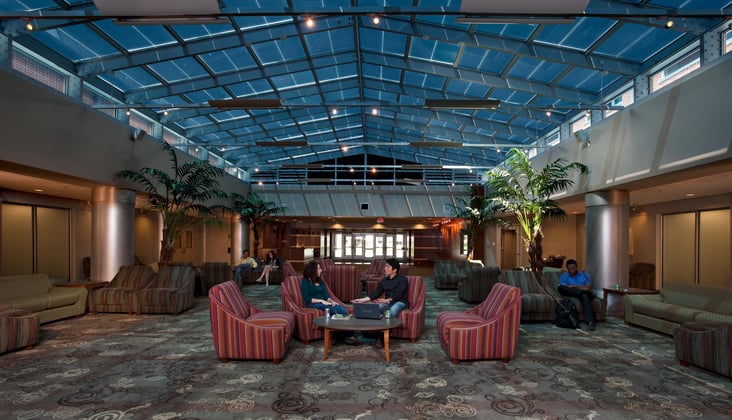This post is one in a series featuring the complete slate of advanced energy technologies outlined in the report This Is Advanced Energy.

Image courtesy of Sage Glass.
The building envelope consists of all the elements of a building that separate its interior from the exterior environment: external walls, insulation, windows, and roofing. Advanced building envelope materials can reduce building energy use and costs by lowering heating and cooling loads, which account for roughly 50% of energy consumed by a typical U.S. home and 40% in commercial buildings. Heating and cooling loads can be reduced by as much as 40% simply by using efficient building envelope technologies. Roof and attic insulation alone can reduce heating and cooling needs by 10% to 15%.
Opportunities for energy savings from specific technologies vary across the United States. In warm climates, reflective roofs and walls, exterior shades, and window coatings and films reduce the energy consumption required for cooling; in cold climates, improved air sealing, high-performance insulation, and advanced windows reduce energy consumed for heating. Building envelope solutions can be tailored to meet a building’s specific needs. In addition to these established technologies, innovations are constantly being developed and introduced. At St. Petersburg College in Florida, leading efficient building materials manufacturer Johns Manville adhered thin-film solar photovoltaics (PV) directly to an advanced “cool roof.” This roofing system generates electricity and reduces cooling and heating needs while being able to withstand hurricane-force winds.
Given that space heating and cooling is the largest energy expenditure for many buildings, efficient building envelope technologies can deliver significant cost savings. A 20% reduction in building energy use — which could be accomplished by advanced building envelope technologies alone — would save an estimated $80 billion in the United States annually. This translates to huge savings for individual households; for example, insulation installed by Next Step Living at a home in Connecticut is expected to deliver $500 in annual savings, with a payback period to the homeowner of just over six years. These applications also improve comfort by reducing drafts. Less expensive technologies, such as air-sealing systems and efficient windows, have payback periods of less than five years.
Efficient building envelope materials in new buildings can also reduce upfront capital costs for heating, ventilation, and air conditioning (HVAC) systems, because smaller HVAC systems are needed. These technologies improve building comfort and enable residential consumers and commercial or industrial building managers to make better energy decisions. Advanced building envelope technologies and installations represent a major market in the United States, where they produced an estimated $15.2 billion in revenue in 2014, up 28% over 2013. The related building design market reached $3.9 billion in revenue in the United States in 2014.
